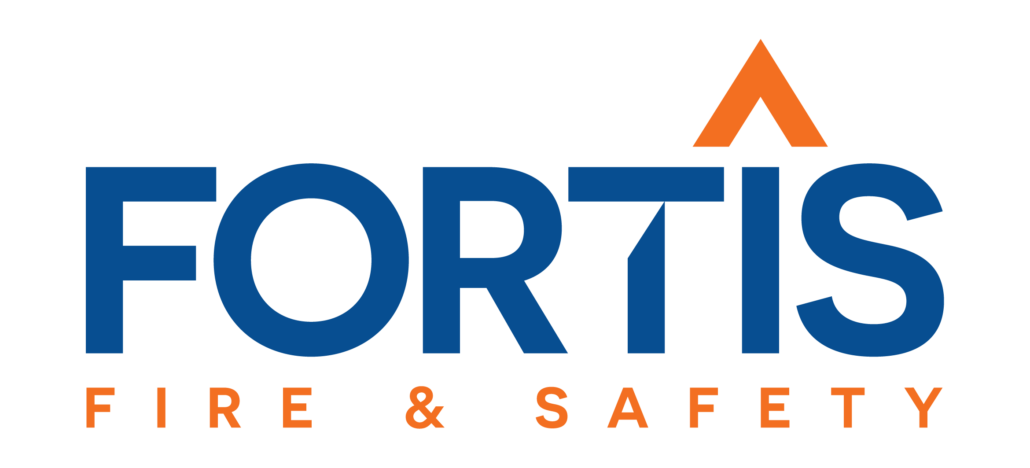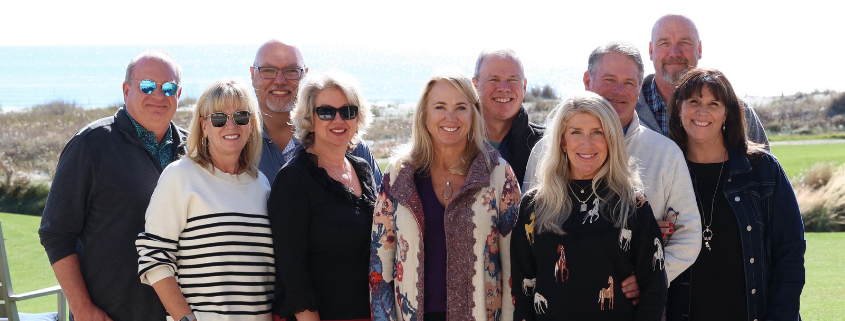Leading the Charge: Peter Shull Reflects on Nearly 3 Decades with LifeSafety Management
/in BlogsPeter Shull started his career with LifeSafety Management, Inc. in 1997 when he was in high school, helping the company network its computers and run wire in the Boynton Beach, Florida, area.
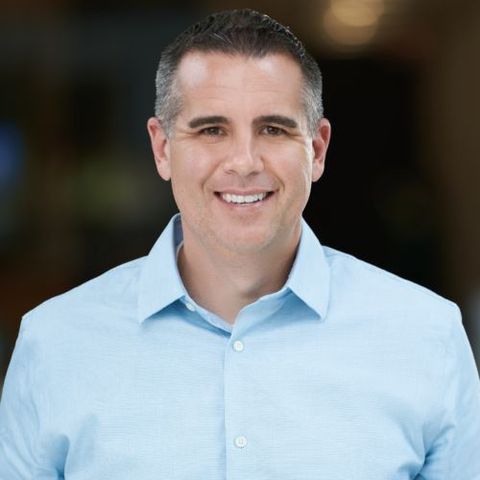 “Upon graduating college, I called the owner of LifeSafety at the time and said I needed a job and a place to live,” Shull said, adding that the owner shared his guest house, along with a job as a fire sprinkler and suppression manager. “I left the guest house two years later when I got married, but I have been at the job ever since!”
“Upon graduating college, I called the owner of LifeSafety at the time and said I needed a job and a place to live,” Shull said, adding that the owner shared his guest house, along with a job as a fire sprinkler and suppression manager. “I left the guest house two years later when I got married, but I have been at the job ever since!”
Now, Shull is the director of operations and leads an impressive organization dedicated to serving customers.
“Personally, I have had numerous roles in a number of different areas of the business, allowing me to challenge myself and grow. Some of the most rewarding moments in my career are watching and helping others grow into positions far beyond what they originally started doing,” he said.
Leadership at LifeSafety
Also top of mind for Shull is having a balance in leadership.
“It’s important to lay out goals and objectives and let people do the job they need to do to get the job done. It’s equally important to inspect what you expect on a routine basis through constantly communicating with the members of your team,” he said.
Strong leaders need to understand and know how to do the job, because “sometimes you have to roll up your sleeves to help push things along,” he said. It’s also the responsibility of leaders to share expertise with their staff and understand the business they’re responsible for. It’s also about gaining the respect and trust of the people who work with you, he added.
“Something I’ve been actively working on is trying to actively listen and take in the issues that are being presented and then challenging the team to come up with solutions. I think this creates a stronger environment of buy-in and accountability.”
Customer Service and Safety
Shull’s goal is to be better than the day before. Continuous improvements and adoption of new technologies, constant learning, and new processes help to fulfill that goal.
And getting better isn’t just for internal mobility. It’s for the customers. “Service has always been our foundation since the inception of LifeSafety Management,” he said.
Customer service comes from the many highly skilled technical individuals on the team. They’re empowered to provide sound problem-solving solutions for customers and then champion the completion of those solutions on behalf of the customer internally. Programs like LifeSafety’s KEY account program emphasize the success of critically identified customers to ensure their work is done promptly, efficiently, and satisfactorily.
LifeSafety performs inspections, installations, and services in compliance with the applicable NFPA or other regulatory standards, with these standards always being the focus of training.
Transitions in the Business
The Fortis Fire & Safety Family of Brands has added ACT, or Advanced Customer Technology, a system that helps the organization better serve customers.
Coming from around 10 different, non-connected software systems meant that data mismatched between systems. Plus, the business in Boynton Beach has grown substantially over the past couple of years, so keeping up with current data is critical, he said.
Today, the accuracy and transparency of LifeSafety’s information is higher than ever. “Our sales team is fully utilizing ACT to create opportunities, track activities, build quotes, and then using reports in ACT to track data such as critical deficiencies requiring follow-up or if quotes haven’t been viewed when sent electronically,” he said.
Additional improvements in 2024 will include using that data from ACT to make strong decisions, add sales team headcount, and continue to scale and fill in holes that have developed from growing at the high rate we’ve seen. Last — but certainly not least — training the LifeSafety team ensures safe operations every day and provides the highest level and quality of service.
Why Buildings Fall Out of Code, and What to Do About It
/in BlogsChange is inevitable.
Whether it’s an update of regulatory laws or a property sale, buildings can fall out of code quickly. Regular inspections and maintenance will help property managers stay ahead of compliance issues — and keep people safe.
“When active fire destroys a building and potentially injures a lot of people, the first thing media does is look for someone to blame,” says Miro Berjan, VP of Texas Operations at Fortis Fire & Safety. Fire departments and insurance underwriters will look at maintenance records and code-required frequency inspections. “The owners always get the first look.” If they saved money by avoiding investment in prevention or if they omitted bringing the systems up to the code, that is where the blame stays.
Causes of Compliance Issues
When it comes to fire suppression systems, the culprit is often outdated technology, such as sprinkler systems designed without hydraulic calculations, or a fire panel that is toward the end of its life, Berjan said.
A change of occupancy can also affect code adherence. For example, a dry cleaning or metal workshop business needs a sprinkler system designed for Ordinary Hazard Group 2 occupancies. If the building is sold to another type of business that is an Extra Hazard Group 1 occupancy (such as die casting, plywood shop, printing, or textile factory), the system most likely would have to be upgraded in order to meet the water demand required by the new Extra Hazard occupancy type, said Mario Lopez, VP of Sales at VFS Fire & Security Services, A Fortis Brand.
“In some cases, the new business cannot get their certificate of occupancy because the fire protection system is not adequate for the new occupancy moving in, and fortunately this is not discovered until the new business moves in and seeks to get their certificate of occupancy from the fire department/city,” Lopez added.
Stay Ahead of Inspections
To stay on top of these regulations and ensure compliance, building owners should set up regular inspections and “budget for improvements and repairs based on code changes and normal wear and tear,” Berjan said.
Lopez specified that depending on the component of the sprinkler system, “code requires components to be inspected either weekly, monthly, quarterly, or annual, some require three years, and all sprinkler systems need to be certified every five years.” Hydraulic calc tags on sprinkler systems also let you know if the system is adequate for the type of occupancy.
Fire alarms also require semi-annual and annual testing. But if changes happen to the building, consider reinspection or upgrade. “Once a major renovation is performed, the systems need to be upgraded to current code,” Lopez added.
At Fortis Fire & Safety, we provide routine inspections, testing, service, repair, design build, retrofits, and system upgrades of fire alarm and suppression systems, as well as special hazards and integrated security systems. Specifically, we can write up code issues during the inspection cycle, and we can help budget where to make the most impact on code deficiencies. Learn more about our services available and how we can help your business by contacting us today.
Apprentice Highlight: Daniel Coticchio, Fire Sprinkler Foreman
/in BlogsAbout five years ago, Daniel Coticchio managed a deli, but he wasn’t finding the work to be rewarding.
A few of his friends were working in the Fortis Brand’s Piper Fire Protection service department told him to give the job a try. He took them up on their offer, quickly feeling at home with the team, comparing them to a family. “Everyone takes care of each other,” he says.
Daniel recognizes fire as a dangerous and potentially deadly force. By installing fire sprinklers effectively, he could possibly be part of saving a person’s life, home, or belongings. “It’s very rewarding work to know that what you do makes a difference,” he says. “You know that you’re doing something that will potentially save lives and properly.”
Close Competition
He recently completed the apprentice program at Piper and felt he had the skills necessary to compete. He was right — Daniel won two national awards this year.
In June 2023, he competed in Phase 1 of the American Fire Sprinkler Association (AFSA) National Apprentice Competition, going on to win Phase 2 in September. He also earned gold in the fire protection category of the Associated Builders and Contractors (ABC) National Craft Championship in March.
The AFSA competition consisted of a three-hour exam and a hands-on portion in front of a live audience, where he cut, threaded, and installed a steel and CPVC piping system for sprinklers. After a pressure test and grading on accuracy, craftsmanship, and safety, it was determined that Daniel would bring home the gold (and a $5,000 cash prize)!
Daniel says that these wins open up a lot of doors for him. “That’s a very exciting feeling to hopefully get to do something I might not have been able to otherwise.”
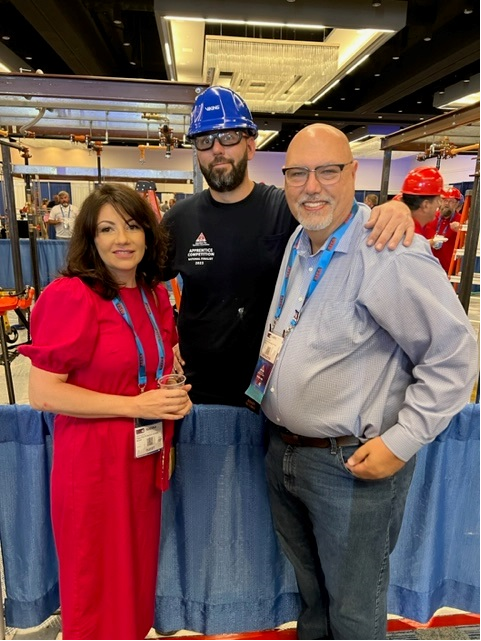
Apprenticeships at Fortis
Born and raised in Clearwater, Florida, Daniel’s roots are close to the Piper location. He commends the company for being supportive of career development and growth, adding that his first foreman Jesse Taylor is a notable figure in his time with Piper. Jesse has pushed Daniel to always do his best, to not cut corners, and to always think forward.
At Fortis, we provide this opportunity for Daniel — and many others — via apprenticeship.
On-the-job training goes far. In fact, some sources say that as much as 90% of learning and development takes place on the job. With mentoring and real-time feedback, our training makes sense for apprentices, who go on to certify and become foremen.
With mutual effort from management and apprentice, careers at Fortis flourish.
“Managers create the foundation for career planning success, but employees are an equal partner in their own career planning — it can’t happen without employee involvement,” says Jennifer Courtney-Trice, Chief Human Resources Officer at Fortis.
We encourage our team members to share their goals with their managers, seek out feedback, and consider what success looks like. Let’s work toward making that vision a reality together.
Find open positions for apprentices and foremen alike at our careers page.
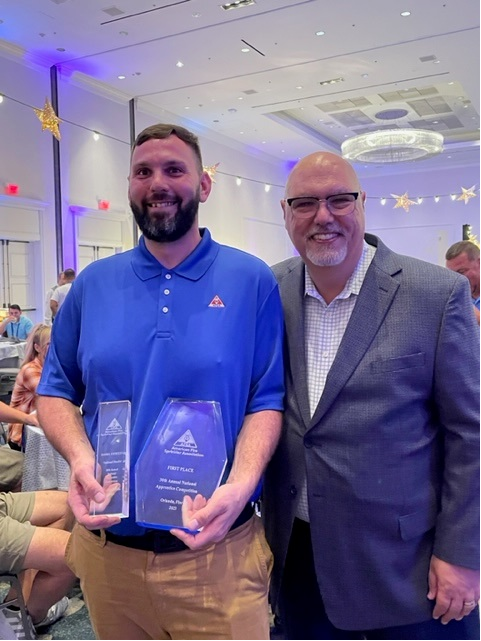
Reduce Risk: Inspect and Maintain Your Fire and Life Safety Systems
/in BlogsIt’s not enough to simply buy a fire extinguisher or install a fire safety system and forget about it.
Especially in buildings with tenants, service and maintenance agreements are vital to risk mitigation efforts, so facilities managers must have all fire and life safety systems and equipment inspected and maintained regularly.
“Testing and maintenance agreements reduce your risk and exposure by keeping equipment and systems running efficiently, helping to protect your business against unfortunate events like a fire, significant water damage, or even loss of life, all due to damaged fire and life safety systems and equipment components that are poorly maintained,” said Mario Lopez, Vice President of Sales at Fortis Fire & Safety.
Not only are routine inspections important — they’re required by the municipality and the property’s insurance underwriter.
What Is Involved in an Inspection?
Fire and life safety inspectors will visually inspect and physically test safety systems, including all components of sprinkler systems, alarm and detection systems, and fire extinguishers to ensure they are in operating condition.
A property’s fire safety systems testing and inspections can include other systems that are connected and monitored by the fire alarm system, including:
- Elevators – recall testing
- Kitchen Hood Systems
- Smoke Evac/Management Systems
- BDA/DAS/ERRCS two-way emergency communication systems
- Emergency lighting systems
- Emergency generators
The frequency of testing and inspections will vary by system, jurisdiction, and insurance underwriter requirements. Depending on the type and the components of the systems, NFPA code-required frequencies for testing and inspections include but are not limited to weekly, monthly, semi-annual, annual, three-year, and five-year certifications.
Risks of Delaying Inspections and Maintenance
Keeping fire protection and life safety systems in good working order goes beyond simply remaining compliant. This is all in an effort to avoid tragedy and loss of life.
One such disaster that could have been avoided is the Deer Park, Texas, chemical fire that burned for three days in 2019. “I received numerous calls from our oil and gas clients during and after that fire,” Lopez said.
This fire caused over $150 million in property damage. It significantly impacted the environment, discharging hazardous chemicals into the air, which led to several shelter-in-place advisories throughout the area and health hazards for weeks. Chemicals also flowed into the nearby ship channel, killing wildlife.
“The investigation showed this event could have been prevented if proper safeguards had been in place at the facility,” Lopez added. The Texas Tribune and Public Health Watch revealed that for years before the 2019 fire, federal and state regulators documented repeated problems at the chemical facility tank farm along the Houston Ship Channel.
“The best way owners and property managers can stay on top of their testing and inspection requirements is to hire a professional fire and life safety contractor who can provide and manage all their fire and life safety systems testing and inspection frequency requirements,” Lopez advised.
Fortis Fire & Safety is ready to serve. Learn more about our fire protection services, and contact us for more.
What it Means to be Certified
/in BlogsFortis Fire & Safety is dedicated to safety, both for our employees and the clients we serve. And we believe that an integral part of that safety culture is through certifications and training.
“There is a sense of pride in achieving certification,” says Peter Shull, Director of Operations at LifeSafety Management, A Fortis Brand.
Our customers can rest assured that we have the necessary knowledge to complete safe and quality inspections, testing, and maintenance of their fire safety systems.
When our team members take their examinations and work toward renewals, we reimburse them to encourage continuing education, especially for NICET and ACE Certifications.
NICET CERTIFICATIONS
NICET, or National Institute for Certification in Engineering Technologies, is part of a society of professional engineers, providing certifications around engineering work, including fire protection, civil programs, electrical power testing, and more.
For the fire protection certifications, the first level of certification typically takes about six months of experience, whereas a level-four certification generally requires 10 years on the job.
While Fortis provides training through apprenticeships and on-the-job training, NICET provides the certification, a measure of knowledge and ability to demonstrate proficiency.
Fortis has numerous individuals who hold NICET certification in all five of the fire protection programs:
- Fire Alarm Systems
- Inspection and Testing of Fire Alarm Systems
- Inspection and Testing of Water-Based Systems
- Special Hazards Systems
- Water-Based Systems Layout
ACE CERTIFICATIONS
ACE, or Academy Certification Exams, provides certifications for water-based fire protection systems and is an alternative to NICET in Florida and Georgia.
The process of getting certified looks like this:
Level-one certification requires 16-plus hours of training, along with an extensive exam designed to verify essential knowledge and skills required for entry-level inspectors.
From there, level-two certification has a 32-hour training requirement, with 24 hours spent inspecting and testing water-based fire protection systems. Work experience totaling 2,000 hours of inspection also provides a foundation for displaying knowledge of these systems.
Level-three certifications are set to be released in early 2024.
We believe that investing in our people ensures we have the resources and caliber of a company that consistently provides world-class service to customers. Through our dedication to training and certification, we invest in our people and their safety, as well as the customer and the industry as a whole.
Houston Branch Leadership Highlight: Miro Berjan, VP of Texas Operations at Fortis Fire & Safety
/in BlogsWhen Miro Berjan joined the Fortis Fire & Safety team, he brought decades of experience with him.
Born in former Yugoslavia, he worked throughout Europe in a variety of positions in fire protection companies starting in the mid-80s, and the work proved rewarding for him. “Doing something that saves lives is a noble task. Doing it for a living rewards one daily,” he said.
When he moved to the U.S. in 2001, he spent a decade working for Tyco SimplexGrinnell and subsequently Johnson Controls, and then another four years with Siemens Industry. In 2021, he moved to Houston with his wife of 16 years, Ivana, and two children, to work with Fortis as the Texas VP of Operations.
“Joining Fortis was an opportunity to be a building block in creating a world-class fire protection services company,” Berjan said.
Berjan leads the Houston branch, tasked with further improving the services and safety Fortis provides, along with adding resources closer to the areas of customer demand. “Our goal is to be within a couple of hours of any customers in Texas and given the size of the state that is a tall order.”
San Antonio and Austin customers are largely commercial, whereas Houston and Corpus Christi are primarily industrial markets. As more businesses move to Texas, the demand for Fortis’ services is increasing, so Fortis is looking to expand first to DFW, then San Antonio and Austin, and possibly El Paso. “I see this market flourishing for the next few decades with new construction and retrofits alike,” he said.
Berjan has recently worked on the Fortis Brand Initiative of creating a unified Fortis Fire & Safety organization for the Houston branch. He learned a lot through the rebrand, and he says that this unique experience revealed a lot of invaluable information that will help the larger Fortis family of brands successfully rebrand, too. “I certainly believe that rebranding our Texas business is the first step in a larger rebranding effort that will put all Fortis business units under one name and allow us to scale our business better,” he said.
The Houston branch recently won the Flame Award, recognizing that there were no injuries in Texas for more than a year. “The result is not an accident,” he said. “We take safety very seriously and will continue to make every effort to keep our team unharmed. After all, this is the first onSPEC Service Principle.”
Berjan is confident in the Texas team, which he says is versatile and capable of taking on any challenge. “We will work hard, have fun doing it, and continue looking forward to a bright future,” he said.
Follow Us
Quick LInks
Houston Office
3413 N. Sam Houston Pkwy W.
Suite 206
Houston, TX 77086
(713) 636-9232
SCR-G-3062166
HCR-3062160
ECR-3062130
ACR-3062017
Headquarters
1515 Woodfield Road
Suite 630
Schaumburg, IL 60173
© 2024 FORTIS FIRE & SAFETY
site designed by digitalstoryteller.io

